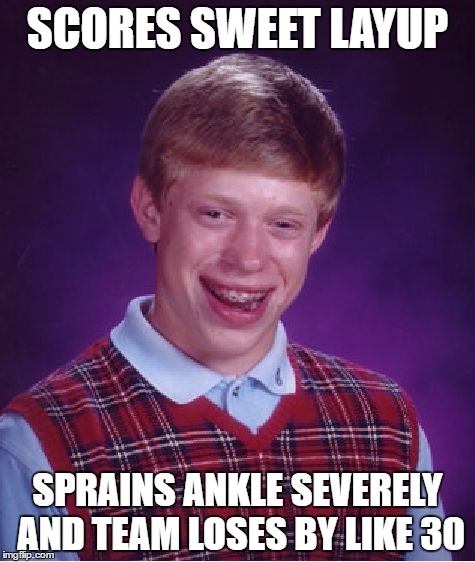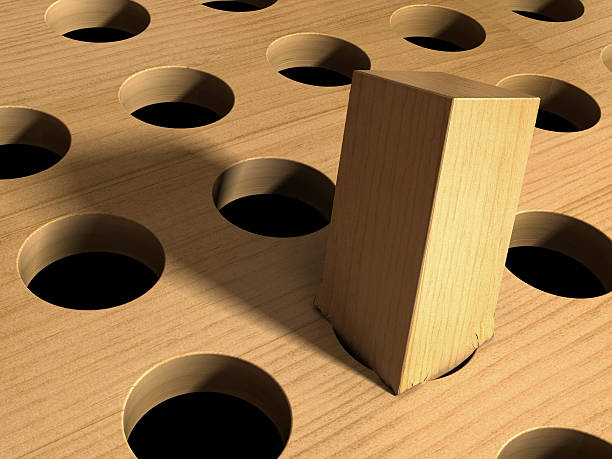Growing up I fell in love with basketball. I’d race home after school to go to the park and just get lost in shooting shot after shot. As I grew older I started noticing all the different current trends and fashion in shoes and what kids wore on their feet. Everywhere I went kids wore Jordans, Nike Shox or any shoe that had some kind of air bubble. These flashy looking shoes were all the rage. In my young fifteen-year-old mind I thought it was the greatest thing since sliced bread and wanted to get a pair to show off. The “Walking on Air” vibe was certainly brilliant marketing to sneakerheads trying to display luxury built on comfort. During gym class, I’d play with these type of sneakers more and more and I even competed in my youth group basketball with a set of Jordans VI that had the air bubble in the heel. I can remember what I said to myself almost every time I slipped those bad boys on. “These feel narrow and when I land it feels like something is off but who cares”. I remember how awkward it felt to move and run but I didn’t want to make excuses thinking “Hey it’s not the shoe that makes someone great its the way they play so” and so I continued to wear them. Plus I just really cared about playing no matter what I had on my feet. I continued to compete despite slipping and sliding awkwardly with them on. That overlooked feeling would soon come to a head when during my final youth group championship game I sprained ankle severely the first two minutes of the game scoring a layup. I landed on another person’s foot awkward as every person who sprained their ankle knows but I tried to reverse the motion trying to get my balance back toward the midline and compensated further injuring the other side as well. But, hey, I sprained it while scoring for my team so that shows dedication right?

This injury made me reconsider what I wore on my feet and even how I moved. This also led me to appreciate the human body and appreciate all the complexity that goes into movement.
David Forland, Nike’s director of cushioning innovation, changed Nike’s approach during the late 80’s in order to sell more sneakers. In order to sell the sensory perception of walking on air, Forland inversely made each model having a greater volume of air than the last one and decreasing the amount of foam. He stated that “Foam breaks down; air doesn’t”. All that fancy air bubble unit is just a polyurethane pouch filled with inert gas and they just connect it to the foam sole. They obviously had major success since some of these sneakers are some of the most lusted after sneakers for decades catering to many populations of people and different athletes. Here were some of the so called benefits of the MAX AIR
- Versatile: Max Air cushioning is designed to meet each athlete’s exact specifications of athletic performance
- Cushioning: absorbs impact forces when the foot strikes the ground protecting muscles, joints and tendons and recoils to protect against the next impact forces. which will protect athletes from stress and fatigue.
- Durable: provide cushioning throughout the life of the shoes
These are tempting but dubious claims. I think it’s quite a claim to say that a pocket of injected air works for every athlete and their exact specification for their sport. So what works for a basketball player will also work for a marathon athlete?
That’s a perfect example of a cookie cutter approach. A physical therapist and biomechanics expert named Jay Dicharry probably hits the nail on the head telling The Atlantic “Part of the problem is the shoe industry as a whole does a really horrible job of matching footwear to feet,” Sadly this is what good marketing does. It just sells products without any regard to the activity. It’s even dumb easier when you’re able to use star athletes to endorse your product.
While the air bubble certainly revolutionized the sneaker world, does this air cushioning unit really absorb the shock? Unfortunately they don’t do as they claim to and in fact, dampens your ability to feel the ground. This messes with the way you move by delaying the proprioceptive response of the ankle. These air units aren’t absorbing shock not because they aren’t strong enough to resist the ground forces but because it’s robbing you from feeling it all! It’s hiding the input! Add a one to two inches in the heel and it complicates the kinetics of your foot. Here are some studies showing that highly cushioned shoes don’t decrease the impact forces Study 1, Study 2, Study 3, Study 4 but this particular Study 5 was a big one because it showed that one of the risk factors to ankle injuries were players that wore shoes with air cells in the heel were 4.3 TIMES MORE LIKELY TO INJURE AN ANKLE than those wearing shoes without air cells The fifth study hypothesis is that the air cells located in the heels of basketball shoes decrease rear foot stability, which may, in turn, increase the risk of ankle injury. I believe it makes sense since the extra air in the heel puts an extra inch or two in your shoe and so now your much higher off the ground which leverages into spraining your ankle easier. Add that you have something that is supposed to act like a pillow underneath your heel which disrupts how you sense the ground below you and you got yourself a problem.

https://memegenerator.net/YouRe-Gonna-Have-A-Bad-Time-Guy/caption
Because I like to play devil’s advocate, I tried to find some studies that showed that some high cushioned shoes did decrease the impact of forces. The studies that supported this notion showed a decrease in EMG musculature in the legs Study 1, Study 2. While the evidence does support that it decreases the EMG in the musculature, does that truly mean that the impact forces are being absorbed and the shoes are doing their job? I don’t think the EMG tells the entire story. Perhaps the decrease in muscle activation is because your body doesn’t anticipate anything happening and so it doesn’t have to respond. It leaves me with the question of is this perceived safety of muscles not turning on a problem in of itself?
Then there is one Study that flips the notion that impact forces are the cause of injury. In it, Nigg states “A new paradigm for impact forces during running proposes that impact forces are input signals that produce muscle tuning shortly before the next contact with the ground to minimize soft tissue vibration and/or reduce joint and tendon loading. Muscle tuning might affect fatigue, comfort, work, and performance. Experimental evidence suggests that the concept of “aligning the skeleton” with shoes, inserts, and orthotics should be reconsidered. A new paradigm for movement control for the lower extremities proposes that forces acting on the foot during the stance phase act as an input signal producing a muscle reaction”. Here is another Study showing that muscle damps soft tissue resonance at heel strike. Wakeling states that “Muscles generate forces which act across the joints and, therefore, shoe design may be used to modify muscle activity and thus joint loading during walking and running”. The second study in this paragraph shows how the different shoe designs modify muscle activity because each design has specific pros and cons in which it robs how you sense the input and so the muscle doesn’t allow itself to tune in to the forces coming in.
So the body encounters these impact forces and perceives them vibrations. but what do vibrations have to do with impact forces? According to Benno Nigg’s work on Muscle Tuning, the body dampens and absorbs the vibration of the impacts of everyday loads through isometric contractions (Nigg, B.M., Liu, W). So the muscle tuning happens by the muscles isometrically contracting in order to decrease the vibration in soft tissues in joints and tendons. Nigg saw the impact forces as a source of feedback in response to the vibrations. The tuning function of muscle activity (muscle tuning) suggests that impact signals are sensed and the central nervous system responds by tuning, if necessary, the activation of the corresponding major muscle groups, in reducing impact loading during athletic activities (Nigg and Wakeling, 2001). The isometric contractions serve as a pre-activation of muscles prior in order to prepare for impact to the ground. It’s a signal used to detect what’s going on and adjust accordingly with vibration (Nigg,2000). Add the different surface types such as hardwood, concrete and the muscle tuning frequency changes. There was also a study by O’Flynn (1996) that showed the pre-activation changed based on surface (https://www.ncbi.nlm.nih.gov/pubmed/15336933). This muscle tuning is calibrated to the surface in order to control the soft tissue vibrations. If someone was running on concrete the muscle/bone vibration was much higher than running on a soft track. I think we can guess that the muscle contractions are the bodies own mechanism in responding to the vibrations. Perhaps the shoe influences how the body perceives the signals coming in and how to respond. This brings me back to full circle of maybe impact forces are not the problem but maybe it’s the input of the signal that is lost. Also, it makes me think that if the signal is being lost then our feet wouldn’t be able to respond accordingly and so we wouldn’t be able to condition our feet to withstand the volume and demands of the specific sport or activity.
Emily Splichal, the founder of evidencebasedfitnessacademy.com and author of Barefoot Strong, notes that if muscles cannot create enough tension to create the necessary intra-compartmental pressure to dampen the impact force vibrations, the vibrations will default traveling into the soft tissue and bone and cause many issues such as stress fractures and shin splints. So perhaps these air-bubbles mess with the signal because it’s robbing it of the input for the lower leg muscles to isometrically contract so they can respond and adapt to the stress. Wouldn’t it make sense that some of the best athletes and jumpers have exquisite timing patterns to contract and respond to the stress and high volume of jumping?

http://www.sportsnet.ca/basketball/nba/the-oral-history-of-vince-carters-dunk-contest-win/
I’m not sure if this is even close to what’s really happening in our body but it sure does make me think. Here’s a fascinating story about Dr. Benno Nigg working with Cirque du Soleil in 1999 (http://www.calgaryherald.com/news/calgary/professor+pioneer+peak+athletic+performance/9974516/story.html). The performers were getting Achilles tendonitis and plantar fasciitis injuries and the company was befuddled as to wonder why this was happening. Nigg searched and found that the problem was that underneath the stage were a bunch of hidden beams. The performers had no idea whether they were secretly landing on the stage or where the beams where. Nigg thought the beams changed the vibration frequency of the above stage and their body couldn’t anticipate what vibrations to receive when they landed. They couldn’t perceive the accurate input when they landed and the volume was taking a toll on them. Nigg advised to simply remove the beams and ensure the stage had a consistent frequency throughout when they landed. This would allow the performers to accurately perceive the vibrations and allow their muscles to do what they were meant to do in their specific activity. At first, the organization was skeptical but they followed through and the performer’s injuries went away.
I think we can hypothesize that the muscle contractions are the bodies own mechanism in responding to the vibrations. The bottom line is the body adapts to the sensory input it’s given and if we are covering the input of how much force we are receiving then this could be deleterious in overcoming our environment. This could lead to injury because we might not even be aware of the damage being done. Imagine if you didn’t have any pain receptors in your skin against a hot stove. Not to get all sciency but while you wouldn’t feel the sensation of pain from the stove, it would still impact your body in a negative way without us even knowing. This is why we have pain receptors to tell us that we are in danger.
While these air bubbled shoes are perfectly fine to wear casually, we must understand they were not designed to truly take the demands of many sports no matter how cushiony or flashy they look. There is no correlation to cushion and injury because that’s not the question we should be even asking. Perhaps the question we should be asking is “Are we receiving the right input in this activity and do our feet have enough resilience to adapt and respond to it? Funny how sometimes the best looking shoes aren’t always designed for performance that we are sold on. You wouldn’t want a Ferrari to tow your car even though you might be breaking people’s necks trying to do it. That’s what tow trucks were designed for. It’s hard in this day in age to focus on keeping things simple since we are always looking for novel stimulus to escape from the simple boring truth. It’s important to critically think for ourselves the next time someone sells us a flashy product telling us it will enhance our life. But before we pick something to wear for our sport or activity, we should consider the novelty of the specific demands of that sport and how they allow us to load our feet and our body. The next question, which I think is a good idea, is to ask ourselves how much of this activity can we do before we feel like we can’t walk for a week. Consider your own anatomy and how it may be a bit different and run with it. I’ll leave you with this golden quote by Daniel Lieberman, a Harvard professor, “How one runs probably is more important than what is on one’s feet, but what is on one’s feet may affect how one runs.” Our shoes or maybe lack of them and how we move in them certainly play a role in our movement.
Kick off your shoes with this jam
Cheers!
Also I have to pay homage to my favorite singer of all time Chris Cornell! RIP
References
http://www.barefootrunning.fas.harvard.edu/
https://www.ncbi.nlm.nih.gov/pmc/articles/PMC5384048/?report=reader#j_hukin-2017-0018_ref_031
https://www.ncbi.nlm.nih.gov/pmc/articles/PMC5384048/?report=reader
http://news.nike.com/news/the-evolution-of-visible-air
Nigg, B.M., Liu, W. The effect of the muscle stiffness and damping on simulated impact force peaks during running. Journal of Biomechanics. 1999;32:849–856.
https://www.ncbi.nlm.nih.gov/pmc/articles/PMC5384048/?report=reader
https://www.ncbi.nlm.nih.gov/pubmed/16131701
Click to access v035p00103.pdf
http://www.scienceofrunning.com/2010/01/why-running-shoes-do-not-work-looking.html
Click to access biomechanics.pdf
http://www.otpbooks.com/emily-splichal-understanding-impact-forces/
What the Foot by Gary Ward


One thought on “Air Bubbles in Shoes…Do They Cushion Impact Forces?”